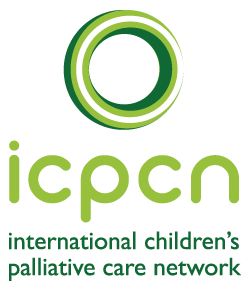What if we viewed lived experience as an asset? As an asset of professional, economic,…
Children’s Palliative Care and the NOW Campaign
I know this is slightly different and perhaps not my normal sort of blog post, but this is something that is very important to me. I have recently been appointed Global Youth Ambassador for the ICPCN (International Children’s Palliative Care Network) and it is through this organisation that I have learned so much about palliative care in this country and worldwide. I sometimes need to remind myself of the good fortune of the majority of families in this country who have access to excellent palliative care – though even in Great Britain we are striving to improve this support. I would be grateful if you could take a few moments to read this blog in the hope that I can bring about awareness of the need for good palliative care.
It is estimated that there are 20 million children worldwide who could benefit from palliative care. Approximately 21,100 life-limited children and young people in the UK will require palliative care annually, at a rate of 16 per 10,000 of the population age 0-19. In all studies, about 30% of children and young people that have died have cancer; the remaining 70% includes a combination of conditions, predominantly neurodegenerative, metabolic and genetic. The UK mortality rate for 1-19 year olds from life-limiting and terminal illness is 1.2 per 10,000 per year. In the US, approximately 500,000 children cope with life-threatening conditions at any one time, and roughly 50,000 children die from such conditions. Less than 1% of children needing hospice services receive it in the United States. The number of children reached with palliative care services in South Africa in 2012 was 14,501 (less than 6% of specialised need), 545 in Kenya (less than 1% of the specialised need), and 5,438 in Zimbabwe (less than 5% of specialised need). It is estimated 801,155 children needed palliative care in South Africa in that year alone (2012). A systematic review of children’s palliative care provision around the world, undertaken in 2011, found that 65.6% of countries had no known children’s palliative care activities, 18.8% had capacity building activities, 9.9% localised provision, and only 5.7% of countries had children’s palliative care provision that was reaching mainstream providers.
The children’s hospice movement started in 1982 with Sister Frances Dominica opening the world’s first children’s hospice, Helen House, in Oxfordshire in the UK. Children’s palliative care is a vital and rapidly advancing field of healthcare. It is very well developed in the UK and, though not every child is reached, and there’s always room for improvement, more children have access to palliative care in the UK than in other countries. We are very fortunate to have these services. Funding for hospices, especially children’s hospices, is mainly charitable, relying on donations, fundraising events and some have lottery funding. There is governmental/NHS funding for some hospices, particularly through personal budgets/direct payments which many children and young people have, but they get little-to-no governmental monetary input other than these budgets. We (the UK) even recognise that young adults are a subgroup of their own, and there are now a few young adult-specific hospices. Most young adult units are connected to children’s hospices, for example Helen and Douglas House (both the first children’s hospice and the first young adult specific hospice) and Naomi House and Jacksplace, whereas The J’s Hospice, who are currently only hospice-at-home, was set up to cater specifically for young adults aged 16-40.
With little-to-no children’s palliative/hospice support across many countries of the world, millions of children are going without palliative care. Care that could enrich their lives, reduce suffering, and help them to have a good life and live well as well as have a good death. The lack of children’s (paediatric) palliative and hospice care needs to change. All children and young people with life-limiting, life-threatening and terminal illnesses need to have access to palliative care now, wherever and whenever they need it. This is the aim of the International Children’s Palliative Care Network’s NOW Campaign. ICPCN is the only worldwide charity dedicated to children’s palliative care. Their vision is
“To live in a world where children’s palliative care is acknowledged and respected as a unique service, and every child and young person with life-limiting or life-threatening conditions and their families can receive the best quality of life and care regardless of which country they live in. The International Children’s Palliative Care Network (ICPCN) shares a vision that the total need of life-threatened or life-limited children should be met to encompass physical, emotional, spiritual and developmental aspects of care.” You can read more about their aims and mission on their website.
I was recently appointed their first Global Youth Ambassador, and I am enjoying and looking forward to making a difference to the lives of life-limited and life-threatened children and young people, and to get palliative care to every child worldwide who needs it. The ICPCN’s NOW Campaign aims to raise the profile of children’s palliative care and to get palliative care to every child who needs it to reduce suffering and maximise quality of life. You can get involved with their NOW Campaign here. I am also an Ambassador and “Young Avenger” for Together for Short Lives, the UK’s children’s hospice and palliative care charity, aiming to improve palliative and hospice care and to get it to every child and young person who need it across the UK, as well as setting an example for palliative care services around the world through their work with ICPCN.
Palliative care gives quality to children and young people with a limited lifetime. The ICPCN definition of children’s palliative care is:
“Palliative care for children is holistic care delivered by a multidisciplinary team of people with the appropriate training. It provides tailored support to address the physical, spiritual, emotional and social needs of a child with a life-threatening or life-limiting condition and extends this care to the child’s family. It can begin at the time of diagnosis or at any point along the progression of the illness even when curative treatments are appropriate. Palliative care for children continues throughout the remainder of the child’s life, accompanies and supports the child and the family at the end of life and continues this support into the bereavement period, for as long as it is needed. The focus of care is on improving and enhancing quality of life, ensuring dignity in death and providing support in bereavement”.
Children’s palliative care (CPC) supports the child and recognises the needs of the family too. Quality of life is of the utmost importance, along with symptom control, and care is child-centred. It includes all aspects of the child’s and their family’s life and their needs. CPC enriches the lives of the child and the family and ensures that children do not live, and do not die, suffering and struggling. CPC also extends to the family’s needs once the child or young person has died, providing bereavement support. It encompasses all aspects of a child’s life and includes the needs of the family. Every child and their family should receive palliative care NOW, wherever and whenever they need it. I hope to do this through my work with the International Children’s Palliative Care Network and Together for Short Lives.
My own journey with palliative care did not get off to a good start, however has saved and enriched my life once we found the right service. When I first became ill in 2008 aged 14, we contacted the local children’s hospice only to find out that I didn’t fit their criteria. Fast forward a few years, we turned to them again and were told that I was “too sick”; they could not cater to my needs as they didn’t have enough trained staff for me to stay there and they also pointed out I was 17 and would soon have to be transitioned over to an adult hospice. Fortunately we came across a young adult hospice-at-home called The J’s Hospice in 2011 and when they came on board I was literally starving to death. My nurse got me into hospital under a fantastic consultant who saved my life. Not only did the hospice save my life, they have enriched it, helped us to get better symptom control and improved my quality of life.
Children’s palliative care is a vital and rapidly advancing area of healthcare. Palliative care ensures quality of life and support for the child and their family, care and support at the end of life, and beyond that with bereavement support for families. We need to get palliative care to all children who need it NOW, wherever they are in the world. With an estimated 20 million children and young people worldwide who could benefit from palliative care, we have a lot of work to do. Please consider joining and supporting both the International Children’s Palliative Care Network, and (specifically for the UK) Together for Short Lives, to improve palliative care and to reach and enrich the lives of as many children and their families across the globe as possible.
Thank you for reading this blog. I hope that the huge majority of readers will never have the need to access this service for their child or young adult. In this country enormous strides have been made in ensuring each child and young adult and their families are supported throughout their lives and end of life care. However, many other countries have little or no palliative care. In raising awareness we can bring about change and raise funding for such an important and supportive service. If you would like any further information please see the links below.








This Post Has 0 Comments